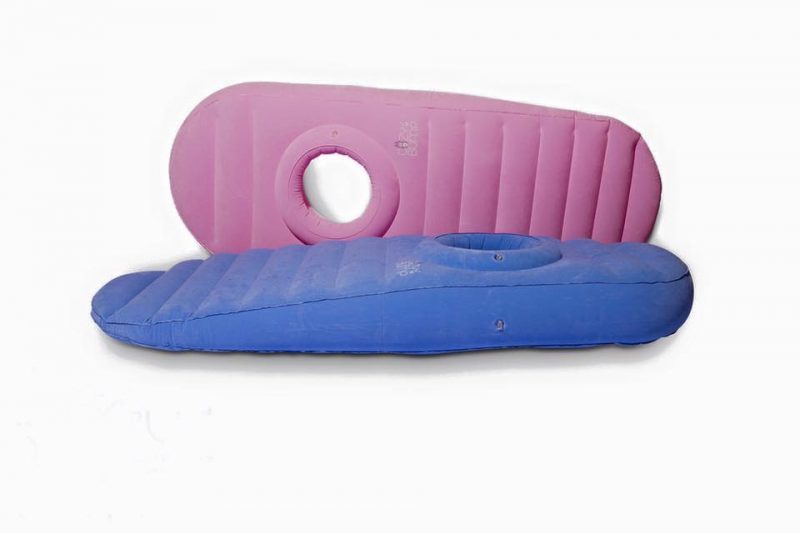5 Best Practices for Temperature Monitoring
Temperature monitoring plays a critical role in nearly every industrial enterprise. Industries that face regulatory hurdles—pharmaceuticals, medical devices, food production, etc.—depend on proper temperature monitoring not just to remain compliant, but to avoid creating a public health crisis–which is presumably why the regulations exist in the first place.
Why is temperature monitoring so critical? Because temperature plays a key role in industrial best practices at nearly every step of the production chain. For example:
- Temperatures must be correct inside engine fluid tanks, electrical transistors, and between moving parts that experience friction, for them to work properly.
- Drugs manufactured and stored at the wrong temperature could lose potency or never make the grade to begin with.
- Medical devices manufactured and/or stored in improper temperature conditions may fail at the worst possible moment—when a patient’s life hangs in the balance.
- Perishable food products farmed, processed, stored, and distributed at the wrong temperature may acquire foodborne contaminants and become unsafe to consume.
Examples of the consequences of supply-chain temperature failures abound. Biological pharmaceuticals like insulin and/or vaccines must often be cold-stored, from manufacture to storage to consumption, in order for them to do their life-saving work. If allowed to heat up, the compounds can quickly lose their potency.
Certain medications are radioactive, requiring a strict cold chain to remain both safe and effective.
Cold-chain failures result in $35 billion in annual losses for the pharmaceutical industry.
At the opposite end of the spectrum, fat-emulsion pharmaceuticals become dangerous if stored below freezing temperatures, leading to the potential for artery blockage. Baxter International Inc. had to recall and absorb the cost of Intralipid 20% IV fat emulsion as a result of an accidental freeze in the supply chain.
These examples are just from the pharmaceutical industry. Every regulated industry faces financial loss due to recalls and spoiled products if they don’t carefully monitor the temperature conditions of their production chain.
Proper temperature monitoring requires the implementation of certain temperature monitoring best practices. Here are five best practices to make sure you implement in your industrial temperature-monitoring procedures.
1. Align Your Temperature Monitoring Goals Internally
Aligning your goals internally means making sure your whole organization is on the same page as to why you are monitoring the temperature conditions in your facility. Are you implementing temperature controls and monitoring to:
- Maintain compliant conditions?
- Implement better quality control?
- Reduce waste and loss?
- Reduce personnel costs?
Organizations usually have the most success aligning goals for temperature monitoring when they nominate an individual to take the lead and be accountable. That way, competing visions for temperature control don’t undermine the effort. Defining a realistic budget also helps keep the internal-controls train on the track.
2. Practice Thermal Mapping
Thermal mapping is how enterprises adapt to the fact that temperatures are not uniform throughout a facility. Some places in your facility might naturally experience higher or lower temperatures or greater fluctuations in temperature. For example:
- Warehouses. Warehouses have hot spots and cold spots. You need to know where those are to develop a climate control plan and know if you are storing your entire inventory under optimal conditions—or what needs to be changed if you aren’t.
- Cold Storage. No refrigerator or freezer distributes cold air completely evenly. Goods stored close to compressors or vents will likely be stored under very different conditions than goods stored elsewhere.
- Manufacturing. Manufacturing facilities are likely to be far hotter close to engines and machinery compared to other parts of the facility.
- Chambers. Multi-chambered storage compartments are likely to register different temperatures from chamber to chamber.
One temperature monitor is usually not enough to maintain a compliant facility. Thermal mapping is the process of determining the temperature differentials within your space and creating a map of placement positions for temperature monitors. With enough coverage in the right places, you can create a holistic picture of the temperature conditions of your facility and determine where you need to deploy more temperature control to maintain uniform, compliant temperature conditions.
3. Pick the Correct Temperature Monitoring Tools
Most enterprises rely on an automated digital data logger to record temperature conditions. The alternative is to use outdated chart recorders, which require excessive human labor to process, or, worst of all, manual recording of temperatures—even more labor-intensive.
With a digital data logger in every key position on the thermal map, you can effortlessly record easy-to-process temperature data in each position at once, ready to be compiled in an audit-friendly compliance report.
All digital data loggers have three key parts:
- A sensor (in this case, a thermometer).
- A processor.
- A data storage drive.
Modern data loggers, from companies like Dickson for example, may be equipped with wifi or remote data-download functions, as well as cloud-compatible software that automatically generates reports.
Different data logger sensors record more precise temperatures. Some sensors are interchangeable or replaceable. Make sure to get a sensor, processor, and data storage drive large enough and sensitive enough for your needs.
4. Establish a Schedule for Sensor Calibration and Replacement
While they ease the administrative burden of temperature monitoring considerably, data loggers are not entirely “set-it-and-forget-it.” From time to time they may need to be calibrated. Follow manufacturer recommendations and set a schedule for sensor calibration and replacement.
Note that more sensitive thermometers can record more accurate temperatures, done to a smaller fraction of a degree, which may be necessary for your organization. A stronger processor (with more bits) is able to resolve more pieces of data.
If you have limited processing power, for example, you could resolve a wide range of temperatures into large intervals, or a small range of temperatures into small intervals.
5. Establish a System for Compliance Validation
“Validation” is the process by which your temperature conditions are verified as compliant by the relevant regulatory organization. This is often a big and time-consuming job, one that many enterprises seek professional help to complete.
Adapting these best practices to the particular needs of your business, industry, and regulatory burden is essential to remaining compliant and producing safe, effective products that help your consumers rather than putting them at risk.




